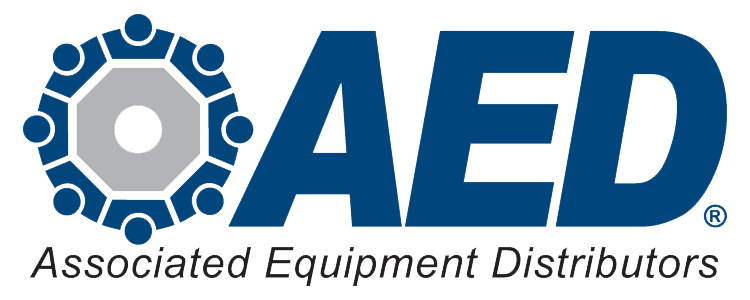In this episode of On the Record, brought to you by Associated Equipment Distributors, Marc Johnson, principal with Pinion, provides 4 factors that will be important for dealers to watch in 2025 that will impact their business. In the Technology Corner, Noah Newman has a preview of January’s Precision Farming Dealer Summit in Louisville. The latest Sandhills Global market report shows combine auction prices increased more than other categories. And, in the self-propelled sprayer market, the big 3 still dominate but other brands are gaining ground.
On the Record is brought to you by Associated Equipment Distributors — the leading association in North America for the equipment distribution industry. Check out the upcoming 2025 AED Summit, the only industry event strictly dedicated to the equipment distribution industry, with 4 keynote speakers, over 40 industry specific education sessions, and over 200 exhibitors at www.aedsummit.com. Contact us at aedsummit@aednet.org for more information about how you can register for this event.
TRANSCRIPT
Jump to a section or scroll for the full episode...
- 4 Factors to Watch for in 2025 Ag Equipment Market
- Precision Farming Dealer Summit Just What the Doctor Ordered After Challenging Year
- Auction Prices Tick Up in November
- Sprayer Purchase Plans
- DataPoint: Charting Machinery Costs on Illinois Farms
4 Factors to Watch for in 2025 Ag Equipment Market
During Ag Equipment Intelligence's 2025 Executive Briefing Dec. 10-11, Marc Johnson, principal with Pinion, provided an economic outlook for the ag equipment industry.
Johnson emphasized several primary factors dealers will want to look out for in the coming year, including: bonus depreciation, interest rate reduction, corn prices, and manufacturer response.
“I think there are a few things that they need to be looking for. And if they happen, things will go well. And if they don't, they'll be challenging.”
“I think that one of the things we need to watch for is what does the government do with bonus depreciation? That could actually be fixed in the lame duck session of Congress here. If we get back to a bonus depreciation fix, that's 100%, everybody's going to be excited to buy equipment again and get that write off that farmers so desire. That's a key one.”
“Interest rate, for that reduction to continue going down. If we could get another half a point, or even another quarter point, that gets us to that point where we're down 1%, and the banks have always offered this whole thing out there about, "If your mortgage is down by 1%, it's time to refinance." That's one of those things that maybe we could get some refinancing going on and free up some cashflow. So if we get another quarter point or more on interest rate that will certainly impact things.”
“I think the last thing would be to watch corn prices. Obviously, we'd like to see those get closer to five. I don't know that we're going to see $5 corn in the next few months, but we could maybe by next summer see that if some of this demand with exports continues to happen. If tariffs get in the way and block that and we get kind of stuck in $4.30 to $4.50 corn, I think that's better than where we're at now. So, we'll see at least a stabilization. But if we see corn prices go back down underneath $4.20 or down under $4, we're going to be maybe moving towards an Ag economic recession if we keep seeing corn prices there. I'm hopeful that corn prices are going to increase, but I don't know that we're going to get back to five bucks.”
“Those are really the three big things that are going to impact our dealers.”
The last thing Johnson says dealers will need to pay attention to is how manufacturers respond to these other 3 factors as it will likely impact the dealers’ business.
“I don't want to make this be a manufacturer versus distributor thing, because we have got to get along. We have to appreciate that the manufacturers are pulling back on production, because that's going to stabilize use. But at some point when they come back, how they come back — and what they're going to do with that demand, how they're going to spread out that equipment — that's going to be really key to not just what happens to us as far as margins go, but what happens to our cashflow and our equity? And that's my biggest concern for dealers right now is that cashflow and their equity.”
Precision Farming Dealer Summit Just What the Doctor Ordered After Challenging Year
We’ve been busy over here in the Technology Corner preparing for the 10th annual Precision Farming Dealer Summit, taking place Jan. 6-7 in downtown Louisville, Ky. Skip Klinefelter, CEO of Ag Technology Solutions Group in Greenville, Ill., will be one of several speakers sharing their unfiltered perspective on the state of precision ag. And in a challenging economic year for so many dealers out there, Skip says a conference like this comes at the perfect time.
“I think it puts a higher value on it than normal. You can pick up 2 or 3 little things at any conference you go to. If you’re not, you’re not paying attention, I’m pretty sure. But something like this, there may be something in particular you may need an answer to or help with. And most of the people at these conferences are willing to share their thoughts on it. It may be more important to attend a conference like this today than in great times when you’re just having a good time going to a conference and talking to your buddies.”
Head to PrecisionSummit.com to check out the program and reserve your spot. Hope to see you in Louisville Jan. 6.
Auction Prices Tick Up in November
The latest Sandhills Global market reports, released December 9, shows auction prices for agricultural equipment ticked up month over month in most categories in November (the compact and utility category was an exception), with combines leading the other farm equipment categories.
TractorHouse Manager Ryan Dolezal says high-horsepower tractor and combine inventory is still climbing while asking values are coming down.
He says, “In both categories, auction values have been increasing but are now on a steady trend. Combine auction values increased more than other categories from October to November. Compact tractors, on the other hand, showed decreases across the board in inventory levels, asking values, and auction prices.”
Inventory levels of used combines in Sandhills’ U.S. marketplaces were up just shy of 1% month-over-month and 0.91% year-over-year in November. Inventory levels are trending down, reflecting a seasonal dip during harvest season, and are expected to rise.

Asking values ticked up 1.66% month-over-month, but dipped down by 1.45% year-over-year, and are trending steady.
Auction values were up 5.5% month-over-month, but down 7.53% year-over-year, and are trending steady, the report notes.
The Equipment Value Index spread fell from 56% in October to 51% in November but that figure is still higher than the previous record highs of 2015.
Sprayer Purchase Plans
Deere, AGCO and CNH brands continue to control 90% of the total self-propelled sprayer market, according to the 2024 CropLIfe 100 Survey. But that is a slight drop from the 2023 survey.

According to the data from the 2024 CropLife 100 survey, smaller self-propelled sprayer manufacturers made some market share gains from the Big Three among the nation’s top ag retailers. Based upon the results, these companies hold an overall 10% market share among CropLife 100 sprayer fleets, up 2% from the 2023 figure.
In terms of 2025 purchase plans, the highest percentage of ag retailers plan to buy John Deere/Hagie equipment. Another 19% will buy Fendt/AGCO and 18% will buy Case IH/Miller sprayers. In terms of the non major line OEMs, 5% of ag retailers are looking to RBR while 2% will look at other brands like GVM, Horsch and Oxbo.

No-Till Farmer recently surveyed its subscribers and found similar results for purchase plans in the next 2 years. John Deere came out on top with 33% of no-tillers who planned to buy a self-propelled sprayer ranking it their first choice. Hagie followed with 29%. Apache was the top choice for 12% of no-tillers and other brands — which includes GVM and Horsch among others — came in at 4%.
DataPoint: Charting Machinery Costs on Illinois Farms
This week’s DataPoint is brought to you by the Precision Farming Dealer Summit, Jan. 6-7 in Louisville, Ky. Visit PrecisionSummit.com to learn more and to register.

According to data from the University of Illinois Department of Agriculture and Consumer Economics, Machinery costs on corn acres have increased over time, from $44 per acre in 2003 to $162 per acre in 2023. The rate of increase in machinery costs follows returns. Costs increased more rapidly during the high return period from the mid-2000s through 2014 and the more recent high return years from 2020 to 2022. Machinery costs have also increased in terms of their share of total land costs. Machinery costs averaged 17.7% of total non-land costs from 2003 to 2013. This share increased to 20.2% from 2014 to 2023.
On the Record is now available as a podcast! We encourage you to subscribe in iTunes, the Google Play Store, Soundcloud, Stitcher Radio and TuneIn Radio. Or if you have another app you use for listening to podcasts, let us know and we’ll make an effort to get it listed there as well.
We’re interested in getting your feedback. Please feel free to send along any suggestions or story ideas. You can send comments to kschmidt@lessitermedia.com.








